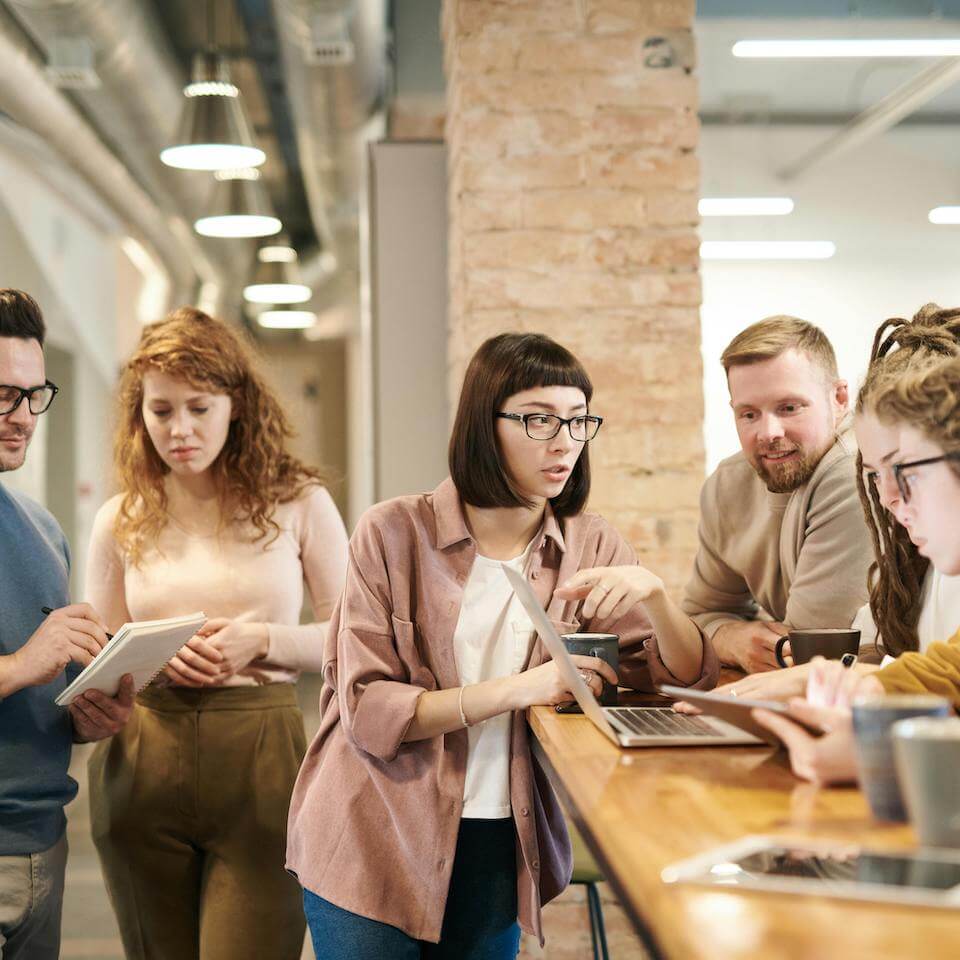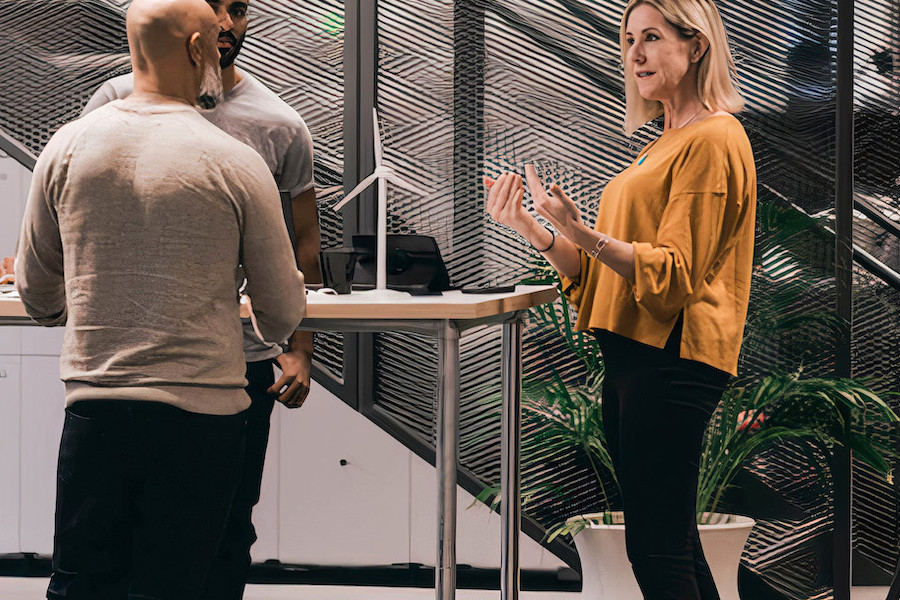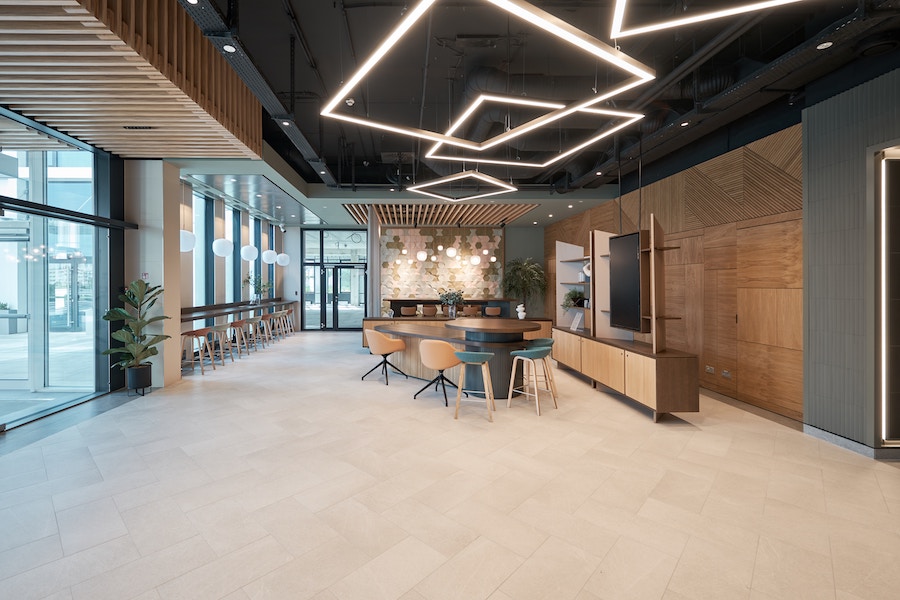When undergoing an office design or office refurbishment project, knowing your employees is crucial. To foster a productive, motivated, loyal and healthy workforce, you need to provide them with an environment that empowers them and all their diversity.
There are many, many studies about different categories of office workers but here, we focus on one in particular – and follow up with our advice on how to facilitate them as employers and office interior designers.
Henley Business School conducted a study and from the findings, devised six categories of ‘post-pandemic workers’ that have emerged since the COVID crisis:
- Socially Conscious Workers
- Employee Advocates
- Work-Life Balance Advocates
- Salary-Driven Weekend Workers
- Employee Satisfaction Enthusiasts
- Lone Rangers
These are categories of employees that are present in businesses of all shapes, sizes and types, so it’s important to know them and understand them.
It’s also important to know how to cater to and support each modern worker type in the workplace through strategic office design—and that’s where we can help.
1. Socially Conscious Workers
This type of modern worker is characterised by:
- Valuing and analysing a company’s ESG position, which refers to how much a company cares about environmental, social and government-related matters.
- Those in more junior roles, for the majority.
Socially Conscious Workers made up around 15% of Henley Business School’s study group.
How to support Socially Conscious Workers in the workplace
Here’s how you can make sure your Socially Conscious Workers feel valued through physical office design:
- Recycling and reusing as much furniture and technology as possible when it comes to office refurbishment or redesign.
- Actively sourcing more sustainable brands and manufacturers.
- Office Town Hall space to share company updates about ESG-related topics with staff.
- Greener workspaces that prioritise biophilic elements.
- Social and/or event spaces that employees can use to host and attend ESG-related events.
This type of worker will also be keen to see your efforts outside of the physical working environment. Penketh Interiors, for example, joined The Planet Mark to demonstrate our commitment to continually reducing our carbon footprint.
2. Employee Advocates
This type of modern worker is characterised by:
- Striving to ensure all employees are treated well and fairly – and putting the onus on their employer to do so.
- Placing more emphasis than others on the importance of incentives, employee benefits and ‘work perks’.
Employee Advocates made up around 10% of Henley Business School’s study group, most of which were females.
How to support Employee Advocates in the workplace
Here are some of the key ways you can ensure your Employee Advocates feel seen through physical office design:
- Taking a proactive approach to making your workspace more accessible and inclusive. For more detailed examples, check out our blog post on designing your meeting rooms to be more inclusive.
- Extracurricular kinds of settings like an office bar, gym, fitness studio, games room, bike storage, social spaces, etc., to facilitate work perks.
3. Work-Life Balance Advocates
This type of modern worker is characterised by:
- Valuing flexible working hours, the opportunity to work remotely and/or work from home through a hybrid working model.
- Valuing benefits such as their birthday off, 4-day weeks and unlimited annual leave.
Work-Life Balance Advocates made up around 39% of Henley Business School’s study group. More than half of this group were male.
How to support Work-Life Balance Advocates in the workplace
Here’s how you can make sure your Work-Life Balance Advocates feel supported through physical office design:
- Conscious and sophisticated support for remote workers, such as AV and video conferencing technology, to ensure they can participate seamlessly and equally.
- Hot desking over dedicated desking so that hybrid workers know they always have a place to work when they are in the office.
- Resimercial design elements to make the workplace feel more like a home-from-home.
- Prayer room, breastfeeding privacy space, bike storage and on-site shower facilities help blur the boundaries between ‘work’ and ‘life’, so employees feel they can meet a better balance.
4. Salary-Driven Weekend Workers
This type of modern worker is characterised by:
- Being exclusively motivated by how much they can earn at a company and what salary they are on.
- Equally, not being overly or at all concerned with other employment factors like perks, working location or ESG approach.
- Unbothered about having to work long hours if it means they can earn more money and climb higher up the career ladder – even over the weekend or outside of standard office hours.
Salary-Driven Weekend Workers made up around 13% of Henley Business School’s study group, most of which were male (70%).
How to support Salary-Driven Weekend Workers in the workplace
Here are some effective ways you can ensure your Salary-Driven Weekend Workers feel empowered through physical office design:
- Focus rooms, plenty of privacy and effective acoustic solutions are key for this type of worker who wants to come in, get their head down and tackle their to-do list with minimal distraction.
5. Employee Satisfaction Enthusiasts
This type of modern worker is characterised by:
- Being easily swayed about whether or not to join a company by reviews other people (former and existing employees) share.
- Also being easily swayed by the benefits package on offer at a company.
Employee Satisfaction Enthusiasts made up around 10% of Henley Business School’s study group – mostly those between the ages of 35-54.
How to support Employee Satisfaction Enthusiasts in the workplace
As this type of worker will compare you to other companies, it’s important to stand out from the competition and take a strategic approach to creating a workspace that will attract and retain top talent.
This will mean different things in different businesses, industries and geographical locations so we would recommend working with an office design partner. They will be able to look at your business and its employees specifically to help figure out what satisfaction means to them.
6. Lone rangers
This type of modern worker is characterised by:
- Placing salary and location at the top of the priority list when it comes to their main motivations.
- Being motivated by the opportunity to work remotely.
Lone Rangers made up around 14% of Henley Business School’s study group, most of which were male (57%).
How to support the Lone Rangers in the workplace
Here are some of the key ways you can ensure your Lone Rangers feel seen through physical office design:
- Conscious and sophisticated support for remote workers, such as AV and video conferencing technology, to ensure they can participate seamlessly and equally wherever they are.
- Quiet spaces and focus zones where they can concentrate and work solo if they need to when they are in the office.
- Collaboration spaces and breakout settings to encourage co-working and communication when they are working in-person with their colleagues.
If you’re planning and workspace transformation project and want to support your employees better through more strategic office design, get in touch with our space-planning experts.











